- Home
- Nathaniel Philbrick
The Mayflower and the Pilgrims' New World
The Mayflower and the Pilgrims' New World Read online
Table of Contents
Title Page
Copyright Page
Dedication
PREFACE
PART I - DISCOYERY
ONE - They Knew They Were Pilgrims
TWO - The Compact
THREE - The Plague
FOUR - Beaten with Their Own Rod
FIVE - The Heart of Winter
SIX - In a Dark and Dismal Swamp
SEVEN - Thanksgiving
PART II - Community
EIGHT - The Wall
NINE - At Death’s Door
TEN - A New England
ELEVEN - The Ancient Mother
TWELVE - The Trial
PART III - WAR
THIRTEEN - Kindling the Flame
FOURTEEN - Fuel to the Enemy
FIFTEEN - Keeping the Faith
SIXTEEN - The Better Side of the Hedge
EPILOGUE
TIME LINE
MAYFLOWER PASSENGER LIST
SELECTED READING
Acknowledgements
PICTURE CREDITS
INDEX
G. P. PUTNAM’s sONs
A division of Penguin Young Readers Group. Published by The Penguin Group.
Penguin Group (UsA) Inc., 375 Hudson street, New York, NY 10014, U.s.A. Penguin Group (Canada),
90 Eglinton Avenue East, suite 700, Toronto, Ontario M4P 2Y3, Canada (a division of Pearson Penguin Canada Inc.).
Penguin Books Ltd, 80 strand, London WC2R 0RL, England. Penguin Ireland, 25 st. stephen’s Green, Dublin 2, Ireland
(a division of Penguin Books Ltd). Penguin Group (Australia), 250 Camberwell Road, Camberwell, Victoria 3124, Australia
(a division of Pearson Australia Group Pty Ltd). Penguin Books India Pvt Ltd, 11 Community Centre, Panchsheel Park,
New Delhi - 110 017, India. Penguin Group (NZ), 67 Apollo Drive, Rosedale, North shore 0632, New Zealand
(a division of Pearson New Zealand Ltd). Penguin Books (south Africa) (Pty) Ltd, 24 sturdee Avenue, Rosebank,
Johannesburg 2196, south Africa. Penguin Books Ltd, Registered Offices: 80 strand, London WC2R 0RL, England.
Copyright © 2008 by Nathaniel Philbrick.
Adapted for young people from Mayflower: A Story of Courage, Community and War. First published in 2006 by Viking
Penguin, a member of Penguin Group (UsA) Inc. Copyright © 2006 by Nathaniel Philbrick. All rights reserved. This
book, or parts thereof, may not be reproduced in any form without permission in writing from the publisher, G. P. Putnam’s
sons, a division of Penguin Young Readers Group, 345 Hudson street, New York, NY 10014. G. P. Putnam’s sons, Reg.
U.s. Pat. & Tm. Off. The scanning, uploading and distribution of this book via the Internet or via any other means without
the permission of the publisher is illegal and punishable by law. Please purchase only authorized electronic editions, and do
not participate in or encourage electronic piracy of copyrighted materials. Your support of the author’s rights is appreciated.
The publisher does not have any control over and does not assume any responsibility for author or third-party websites or
their content. Published simultaneously in Canada.
Library of Congress Cataloging-in-Publication Data
Philbrick, Nathaniel.
The Mayflower and the Pilgrims’ New World / by Nathaniel Philbrick.
p. cm. Adaptation of: Mayflower : a story of courage, community, and war. New York : Viking, 2006. Includes index.
1. Pilgrims (New Plymouth Colony)—Juvenile literature. 2. Massachusetts—History—New Plymouth, 1620-1691—
Juvenile literature. 3. Bradford, William, 1590-1657—Juvenile literature. 4. Church, Benjamin, 1639-1718—Juvenile
literature. 5. Indians of North America—Wars—1600-1750—Juvenile literature. I. Philbrick, Nathaniel. Mayflower.
II. Title. F68.P.2’2—dc22 2007030669
eISBN : 978-1-101-50040-8
http://us.penguingroup.com
To Melissa
LIST OF CHARACTERS
First Settlers and Their Affiliates
William Bradford • governor of Plymouth Colony after John Carver dies; writes Of Plymouth Plantation
John Robinson • pastor and leader of the English separatists in Leiden before they leave for America
Elder William Brewster • Pilgrims’ leading lay minister
John Carver • first governor of Plymouth Colony
Robert Cushman • helped organize voyage to America
Thomas Weston • leading Adventurer from London
Christopher Jones • Mayflower’s master
Robert Coppin • Jones’s mate and pilot
Captain Miles Standish • (wife Rose) Pilgrims’ leading military officer
Christopher Martin • Mayflower governor, original purchasing agent
Stephen Hopkins • stranger who may have been to Jamestown before boarding the Mayflower
Edward Winslow • leading Pilgrim diplomat who also served as governor
John Howland • indentured servant who eventually became a leading citizen of the colony
John Billington • head of what Bradford called the “profanest family” on the Mayflower; sons John and Francis
Thomas Morton • leader of Merrymount
John Sanders • leader of Wessagussett settlement
Phineas Pratt • another leader of Wessagussett settlement
John Hamden • English gentleman who spent winter of 1623 with the Pilgrims
Native Americans
Massasoit • Pokanoket sachem
Canonicus • Narragansett sachem
Squanto • Pilgrims’ interpreter, originally from Patuxet (Plymouth Harbor)
Epenow • sachem from Martha’s Vineyard
Samoset • sachem from Pemaquid Point, Maine
Passaconaway • sachem and powwow from Merrimack River in southern New Hampshire
Aspinet • Nauset sachem
Canacum • Manomet sachem
Iyanough • Cummaquid sachem
Corbitant • Mattapoisett sachem
Hobbamock • Pokanoket pniese
Obtakiest • Massachusetts sachem
Pecksuot • Massachusetts pniese
Wituwamat • Massachusetts warrior
Uncas • Mohegan sachem, pledged loyalty to Puritans during Pequot War
Miantonomi • Narragansett sachem
The Next Generation Settlers
Thomas Prence • Plymouth governor
Thomas Willett • founder of Wannamoisett and friend of Alexander (Wamsutta)
Major William Bradford Jr. • William Bradford’s son
John Miles • swansea minister whose house became Miles garrison
James Cudworth • army commander from scituate
Benjamin Church • carpenter and leading captain during King Philip’s War
Alice Church • Benjamin Church’s wife
Josiah Winslow • son of Edward; first governor of Plymouth Colony born in the New World
Samuel Moseley • leading captain during King Philip’s War; known for his hatred of Indians
Captain Roger Goulding • mariner who rescued Church’s men at the Pease Field Fight and was present at death of Philip
Captain Thomas Lathrop • leader at Bloody Brook
Major Robert Treat • led Connecticut forces at Great swamp Fight
John Eliot • leading Puritan missionary to the Praying Indians
Captain Daniel Gookin • superintendent to Praying Indians
Major Samuel Appleton • commander of Massachusetts forces
&
nbsp; John Gorham • led Plymouth forces with William Bradford at Great swamp Fight
Captain Samuel Wadsworth • led rescue of Lancaster
Mary Rowlandson • (son Joseph, daughters Mary and sarah) captured by Indians at Lancaster
John Rowlandson • Mary Rowlandson’s husband, minister of Lancaster
Captain Michael Pierce • from scituate, killed with most of his men at Blackstone River
Captain George Denison • led Connecticut force with Mohegans, Pequots, Niantics that captured Canonchet
John Hoar • from Concord, negotiated ransom and release of Mary Rowlandson
Captain William Turner • led attack on Indians at Connecticut River
Pastor John Cotton • Plymouth minister
John Leverett • Massachusetts governor
Native Americans
Wamsutta/Alexander • Massasoit’s eldest son
Weetamoo • Alexander’s wife, female Pocasset sachem
Metacom/Philip • Massasoit’s younger son, “King Philip”
Tuspaquin • Amie’s husband, “Black sachem” of Nemasket
John Sassamon • interpreter for Alexander and Philip; one of John Eliot’s pupils
Awashonks • (son Peter) female sakonnet sachem
Tobias • one of Philip’s senior counselors, accused of murdering John sassamon
Totoson • sachem from Buzzard’s Bay, attacked Dartmouth and Clark’s garrison
Nimrod • one of Philip’s leading warriors
Canonchet • Narragansett sachem
Quinnapin • Narragansett sachem and Weetamoo’s husband during King Philip’s War, Mary Rowlandson’s master
Annawon • Philip’s principal captain
Job Kattenanit • Praying Indian, becomes spy for English
Sagamore Sam • Nipmuck sachem, bargains with English for ransom of Mary Rowlandson
PREFACE
The Story We Need to Know
WE’VE ALL HEARD at least some version of the story of the Mayflower, how in 1620 the Pilgrims sailed to the New World in search of religious freedom; how after drawing up the Mayflower Compact, they landed at Plymouth Rock and befriended the local Wampanoag Indians, who taught them how to plant corn and whose leader, or sachem, Massasoit, helped them celebrate the First Thanksgiving.
But the story of the Pilgrims does not end with the First Thanksgiving. When we look at how the Pilgrims and the Wampanoags maintained more than fifty years of peace and how that peace suddenly erupted into King Philip’s War, one of the deadliest wars ever fought on American soil, the real history of Plymouth Colony becomes something altogether new, rich, troubling, and complex. Instead of the story we already know, it becomes the story we need to know.
◆◆◆ It was King Philip who led me to the Pilgrims. Philip was the son of Massasoit, the Wampanoag leader who formed an alliance with the Pilgrims in 1621. I was researching the history of my adopted home, Nantucket Island, when I encountered a reference to Philip in the town’s records. In attempting to answer the question of why Philip—whose headquarters were in modern Bristol, Rhode Island—had traveled more than sixty-five miles across the water to Nantucket, I realized that I had to begin with Philip’s father, Massasoit, and the Pilgrims.
My first impression of the period consisted of two conflicting ideas: the time-honored tradition of how the Pilgrims came to symbolize all that is good about America, and the now equally familiar modern tale of how the evil Europeans killed the innocent Native Americans. I soon learned that the real-life Indians and English of the seventeenth century were too smart, too generous, too greedy, too brave—in short, too human—to behave so predictably.
Without Massasoit’s help, the Pilgrims would never have survived their first year in America, and they remained supporters of the sachem to the very end. For his part, Massasoit realized almost from the start that his own fortunes were linked to those of the English. In this respect, there is a surprising amount of truth in the traditional story of the First Thanksgiving.
But the Indians and English of Plymouth Colony did not live in perfect harmony. It was fifty-five years of struggle and compromise—a difficult process of give-and-take. As long as both sides recognized that they needed each other, there was peace. The moment any of them gave up on the difficult work of living with their neighbors, they risked losing everything. It was a lesson that the first generation of Plymouth Colony had learned over the course of more than three long decades. That it could be so quickly forgotten by their children remains a lesson for us today.
King Philip’s War lasted only fourteen months, but it changed the face of New England. After fifty-five years of peace, the lives of Native and English peoples had become so closely intertwined that when fighting broke out in June 1675, many of the region’s Indians found themselves, in the words of a contemporary writer, “in a kind of maze, not knowing what to do.”
some Indians chose to support Philip; others joined the colonial forces; still others attempted to stay out of the conflict altogether. When the English authorities decided that all Indians—no matter whose side they said they were on—were now their enemies, the violence quickly spread. soon, the entire region was a terrifying war zone. By the end of the fighting, a third of the hundred or so towns in New England had been burned and abandoned.
When violence and fear grip a society, there is an almost overpowering temptation to demonize the enemy, and both Indians and English began to view their former neighbors as subhuman and evil. But even in the midst of one of the deadliest wars in American history, there were Englishmen who believed the Indians were not naturally evil, and there were Indians who believed the same about the English. They remembered to treat each other like human beings and to keep learning from each other, just as their parents had done fifty years before. Unfortunately, this was not enough to prevent war from destroying the promise of the First Thanksgiving.
◆◆◆ The story of the Mayflower ends in tragedy, but it begins with a ship on a wide and blustery sea.
PART I
DISCOYERY
ONE
They Knew They Were Pilgrims
FOR SIXTY-FIVE DAYS, the Mayflower had sailed through storms and headwinds, her bottom covered with seaweed and barnacles, her leaky decks spewing salt water onto her passengers’ heads. There were 102 of them—104 if you counted the two dogs, a spaniel and a giant, slobbery mastiff.
They were nearly ten weeks into a voyage that was supposed to have been completed during the warm days of summer. But they had started late, and it was now November. Winter was coming on fast. They had long since run out of firewood, and they were reaching the slimy bottoms of their water barrels. Of even greater concern, they were down to their last casks of beer. Due to the terrible quality of the drinking water in seventeenth-century England, beer was considered essential to a healthy diet. And sure enough, with the rationing of their beer came the signs of scurvy: bleeding gums, loosening teeth, and foul-smelling breath. so far only two had died—a sailor and a young servant—but if they didn’t reach land soon, many more would follow.
They were a most unusual group of colonists. Instead of noblemen, craftsmen, and servants—the types of people who had founded the Jamestown colony in Virginia—these were, for the most part, families—men, women, and children who were willing to endure almost anything if it meant they could worship God as they pleased. The motivating force behind the voyage had come from a congregation of approximately four hundred English Puritans living in Leiden, Holland.
Like all Puritans, these English exiles believed that the Church of England had been corrupted. But unlike most English Puritans, they believed it was necessary to leave the Church of England if they were to worship God properly—an illegal act at the time. Known as separatists, they represented the radical fringe of the Puritan movement. In 1608, they had decided to do as several groups of English separatists had done before them and move to the more religiously tolerant country of Holland.
�
� Photograph of the Mayflower II, a replica of the seventeenth-century ship, built in England in the 1950s and now at Plimoth Plantation.
They settled in Leiden, a university town that could not have been more different from the rolling, sheep-dotted fields of their native England. Leiden was a redbrick maze of building-packed streets and carefully engineered canals, a city overrun with refugees from all across Europe. Under the leadership of their charismatic minister, John Robinson, their congregation had more than tripled in size.
But once again, it had become time for them to leave. As foreigners in Holland, many of them had been forced to work backbreaking jobs in the cloth industry, and their health had suffered. Worse yet, their children were becoming Dutch. While the congregation had rejected the Church of England, the vast majority of its members were still proudly English. By sailing to the New World, they hoped to re-create the English village life they so dearly missed while remaining far from King James and his bishops.
It was a stunningly brave plan. With the exception of Jamestown, all other attempts to establish a permanent English settlement on the North American continent had so far failed. And Jamestown, founded in 1607, could hardly be called a success. During the first year, 70 of 108 settlers had died. The following winter came the “starving time,” when 440 of 500 settlers were buried in just six months.
In addition to starvation and disease, there was the threat of Indian attack. At the university library in Leiden were terrifying accounts left by earlier explorers and settlers, telling how the Indians “delight to torment men in the most bloody manner that may be; flaying some alive with the shells of fishes, cutting off the members and joints of others by piecemeal and broiling on the coals.”

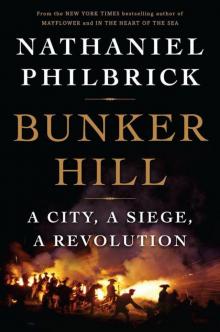 Bunker Hill: A City, a Siege, a Revolution
Bunker Hill: A City, a Siege, a Revolution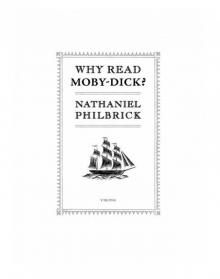 Why Read Moby-Dick?
Why Read Moby-Dick? Second Wind: A Nantucket Sailor's Odyssey
Second Wind: A Nantucket Sailor's Odyssey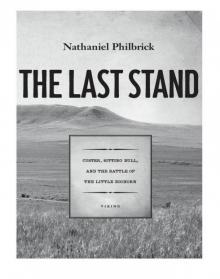 The Last Stand: Custer, Sitting Bull, and the Battle of the Little Bighorn
The Last Stand: Custer, Sitting Bull, and the Battle of the Little Bighorn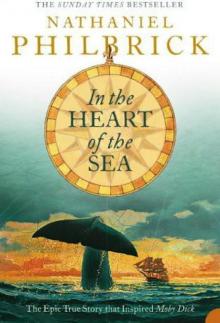 In the Heart of the Sea: The Epic True Story That Inspired Moby-Dick
In the Heart of the Sea: The Epic True Story That Inspired Moby-Dick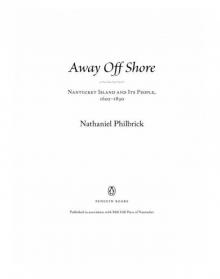 Away Off Shore: Nantucket Island and Its People, 1602-1890
Away Off Shore: Nantucket Island and Its People, 1602-1890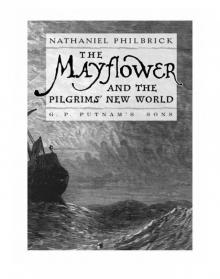 The Mayflower and the Pilgrims' New World
The Mayflower and the Pilgrims' New World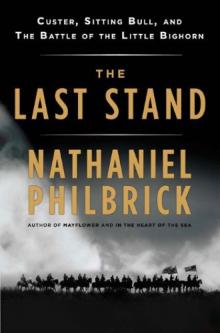 The Last Stand: Custer, Sitting Bull and the Battle of the Little Big Horn
The Last Stand: Custer, Sitting Bull and the Battle of the Little Big Horn Second Wind
Second Wind Away Off Shore
Away Off Shore The Mayflower and the Pilgrims' New World*
The Mayflower and the Pilgrims' New World*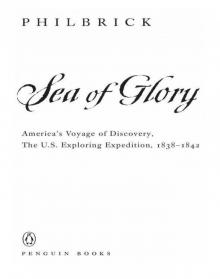 Sea of Glory
Sea of Glory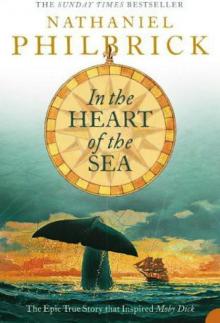 In the Heart of the Sea
In the Heart of the Sea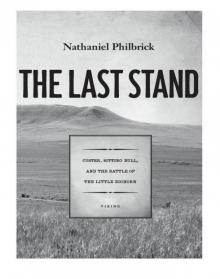 The Last Stand
The Last Stand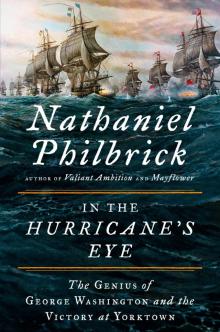 In the Hurricane's Eye
In the Hurricane's Eye